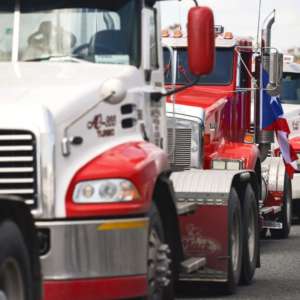On December 18, the Electronic Logging Device (ELD) mandate will go into effect nationwide, forcing truckers to account for their hours of service with unprecedented rigor. That start date is only weeks away, yet many in the industry seem to be in a state of denial about the realities of ELD implementation. There are concerning signs that a lack of preparedness by shippers and carriers alike is poised to wreak havoc on the supply chain at a time when the trucking industry is already grappling with a driver shortage and rising demand.
The ELD mandate has been on the horizon since December 2015, but many–especially smaller carriers struggling to afford the devices, which cost an average of $500–have failed to prepare for it. A November 6th survey by CarrierLists.com reported that 58 percent of all carriers have installed ELD devices. While that represents a sharp uptick from their survey a week before, in which only 37 percent were in compliance, the number is still inexcusably low. Moreover, as the survey’s analysts point out, “even at 90% compliance, it will create chaos with capacity and rates, until supply catches up with demand again.”
Some late adopters are pinning their hopes on President Trump to overturn the mandate, and many have taken to social media and online petitions to voice their opposition, but most industry observers believe the December 18 deadline is unavoidable. Some carriers are waiting until the last minute or planning to delay installation until the law’s grace period ends in April, but this fails to account for the inevitable learning curve as truckers adjust to the devices, and for the fact that state agencies will begin issuing fines to noncompliant trucks starting in December.
Other truckers have vowed to leave the industry entirely, resentful of technology they feel is intrusive. According to one poll, 30 percent of surveyed drivers said they would rather quit than comply, and while industry observers believe that number is artificially inflated by high emotions, and also skews heavily towards older drivers already on the verge of retirement, the industry can ill-afford to lose any truckers, as it’s currently facing a massive driver shortage. This shortage has been exacerbated by the hurricanes in Florida and Texas, which have created demand for construction jobs, robbing the industry of potential new hires in areas that are often prime recruiting grounds. Consequently, carriers are forced to raise salaries and employ inexperienced drivers, who are more expensive to insure.
Increasing labor costs are combining with a robust economy to drive up rates even before the ELD mandate takes effect. According to DAT, the load-to-truck ratio is double what it was this time last year, and the national average van rate is currently hovering around $2 per mile, having never fully subsided from its all-time high in the aftermath of this year’s hurricanes. Meanwhile, the American Trucking Association predicts that freight volumes will grow 2.8 percent in 2017, and continue steady growth throughout the next five years. The big question is just how deeply ELDs will cut into already strained capacity. Larger carriers who have already installed the devices are reporting capacity losses of 4 to 6 percent, but the losses could be much higher for carriers accustomed to taking significant liberties with their logbooks.
There is little doubt that these mounting costs will be passed on to shippers, yet a recent JOC poll reveals that many shippers are unaware or unconvinced that ELDs will have a significant impact on rates and capacity. Still, it’s not too late for shippers to make some common-sense preparations. At this stage, shippers need to do everything they can to be sure that they’re working with ELD-compliant carriers. Those who can should lock in contract rates before they spike. Shippers can also do their part to minimize the impact of the mandate by streamlining their warehouse and delivery processes. Detaining truckers for hours will no longer be merely discourteous, it will eat into the hours of service drivers need to complete their routes, and worsen an already chaotic situation. Any shipper hoping to weather the capacity crunch will prioritize good relationships with responsible carriers, even if that means accepting that rate increases are likely to be sustained and significant.
Carriers, for their part, need to accept that however much they may despise their ELDs, no miracle will stop their implementation between now and December 18th. According to one recently-interviewed driver “…It’s like a hurricane warning. You don’t really get prepared until it’s about to hit you.” This hurricane has been a long time coming, but noncompliant carriers should still use these final few weeks to batten the hatches.



